The journey of the Starmus Enterprise continued for a third, fourth and fifth day! Yes, five full days for a single congress, I present at (almost) every presentation (of the first three days): a first time for me.
I have grouped the last three days in a post because five posts on a congress would be a little too much.... and anyway, the last three days have been a bit less astonishingly intergalactic than the first two. However, always noteworthy, including several Starmus stellar moments like this:
Stephen Hawking
This genius doesn't really need a presentation. He began by telling us a brief story about the time of his life. Of course, you can read everything about this on Wikipedia, but it is much better for the person concerned. In fact, not from himself, but from the software that scans his eyes and selects the required words to form sentences. This, the more words summed up on the audio system made a real impression. What a person! A formidable individual. Huge respect.

Obviously, as soon as Hawking arrived, everyone was wandering around him to get a photo of the famous scientist. Now, I have already expressed my feelings about these human weaknesses trends. Therefore, instead of joining the hustle and bustle, I took pictures to those who, in turn, took photos (by the way, esteem for the two elderly gentlemen who did not participate. With age comes common sense, wisdom, dignity, moral stature....:).
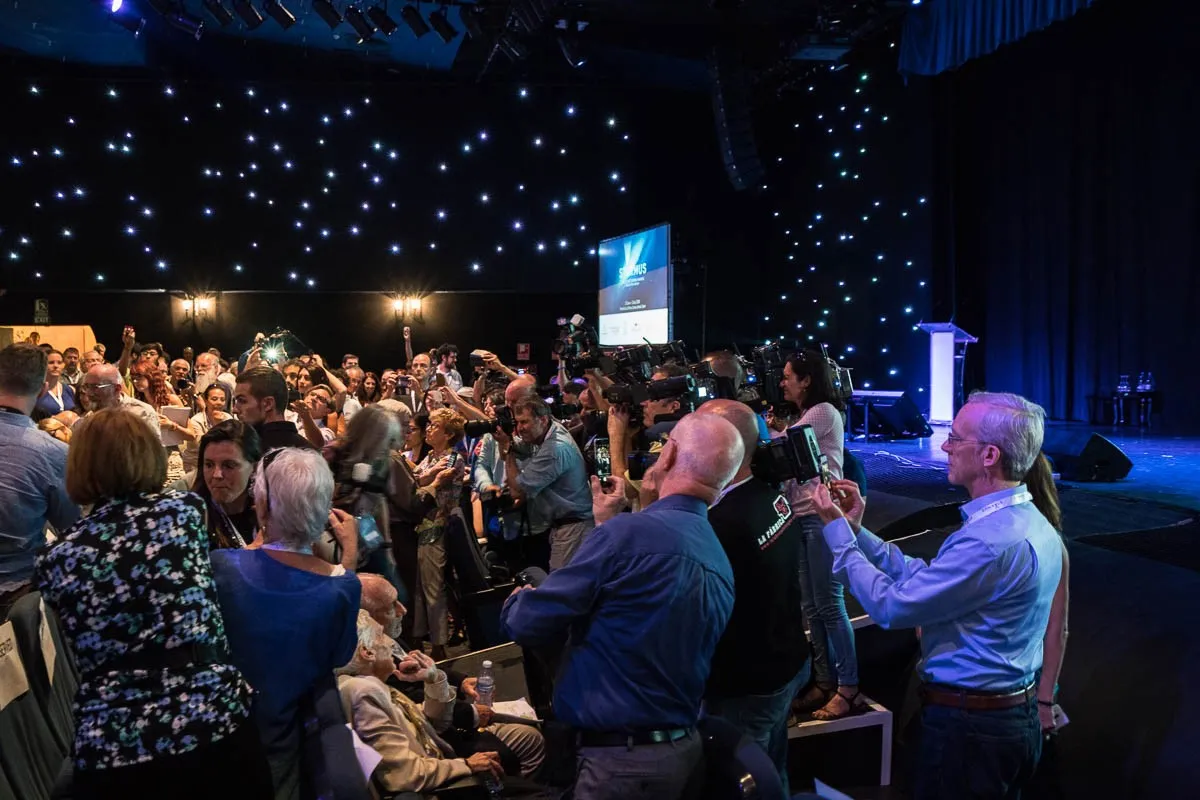
Hawking: A famous name if ever there was one. Respected all over the world by practically everyone, it doesn't matter how little they know about the fundamental physics: even rappers who have even produced an entire album, and they also appeared at Starmus with a preview of their last track "Fear of a Black Planet Hole"! Fundamental and astrophysical. The "verses" are, you guessed, vocoderized to imitate the synthesized language of Hawking. Funny.... in fact there's no bad thing, and I say that I'm not really the biggest hip hop fan.
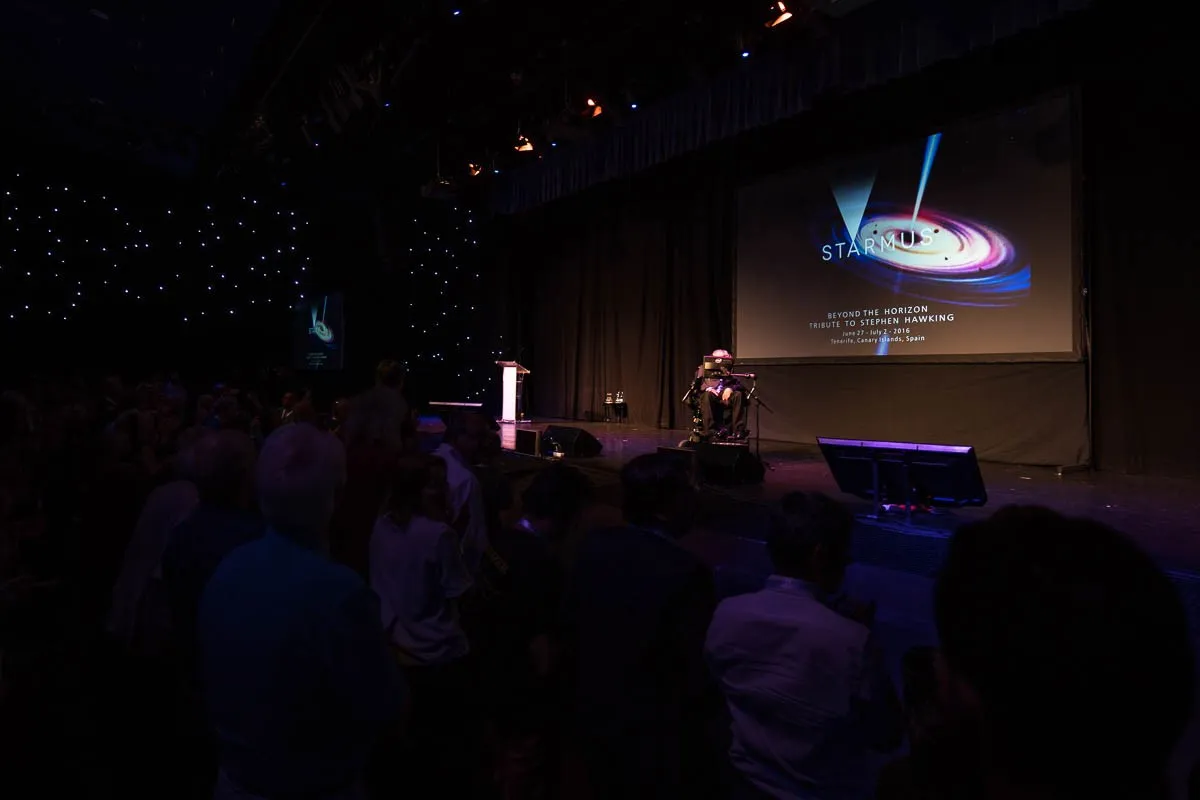
After Hawking, as you can expect, it was all a bit of a proverb anti-climax. There have been good interventions, but only good, not excellent. Here is an account of the best:
Martin Rees
British Cosmologist and astrophysicist. He spoke to the public of rather simple scientific commonplaces, but with a different orientation, very convincing and interesting: time is moving forward; life on Earth has appeared very long ago and is already halfway through its "existence". In two billion yearsâ time, our planet will not be suitable for protein-based life.
Of course, much is still missing, but that will happen. That's why I think it's really important to develop the fundamental sciences: not only do they give us answers to questions about why and how the universe is formed, they also tell us how we, Homo Sapiens, can survive longer. Perhaps in the future we will no longer be Homo Sapiens. Perhaps we will be replaced by Sapiens, without the Homo component. Sad. A little bit. But it does not matter: we must continue with scientific research!
So, in the near future, what can we expect along the road of human progress? Well, all sorts of global problems can arise that make it look like a birthday present in today's seemingly terrible geopolitical problems.
Ok. Let us reflect.
What true, great problem could occur to seriously affect humanity? Some ideas? Well, here are the first five that come to mind:
A great natural and biological hostile force, so tremendous that it erases humanity from the face of the earth - completely and quickly.
A massive volcanic eruption so devastating that it will obscure the sun for years, eroding humanity from the face of the earth - slowly and painfully.
A gift sent from the space so great that...... Goodbye planet Earth.
Massive and slow suicide of all Homo Sapiens due to the progressive worsening of climatic conditions.
The smarter Homo Sapiens will create robots with artificial intelligence, which in turn will destroy all Homo Sapiens.
Something to add people? Something you do not agree with? Let me know it in the comments!
Okay, we return to Starmus. Here, the third point above has been dealt with, specifically on 30 June: Asteroid Day! Asteroid Day? And the next one? Earthquake Day? Volcanic Eruption Day? Day of the tsunami? Big Bang Day? But divinity....
So why 30 June? Was it pulled out of space air? In fact, not. On 30 June 1908, a giant meteorite, later called "Tunguska's meteorite", plunged into the Earth. The impact released energy between 10 and 50 megatars but, fortunately for Earth, not on the surface of the planet, but between 5 and 10 kilometres above. This cosmic firework was perceived thousands of miles away and seemed to be widespread all over the world, almost literally. Twice! But I wonder, what happened on the other side of the planet? The aerial shockwaves would surely have generated a sonic tsunami with a superior volume at 100 concerts of The Who combined, don't you?
Maybe you've never read Bill Bryson before. In this case you will not know that there is a vast amount of cosmic waste, namely meteorites/asteroids, floating in the air, every single piece of which could cause catastrophic damage to the Earth and all vital forms in it. And the bang that it would make.... would not only be strong, it could cause the disappearance of humanity, such as that of dinosaurs.
These frightening stories were told during the speech of:
Russell (Rusty) Schweickart
American Astronaut, the first pilot of the lunar module of mission Apollo 9: scary, for him. Now, he terrorizes others with stories of unexpected asteroid attacks on Earth.
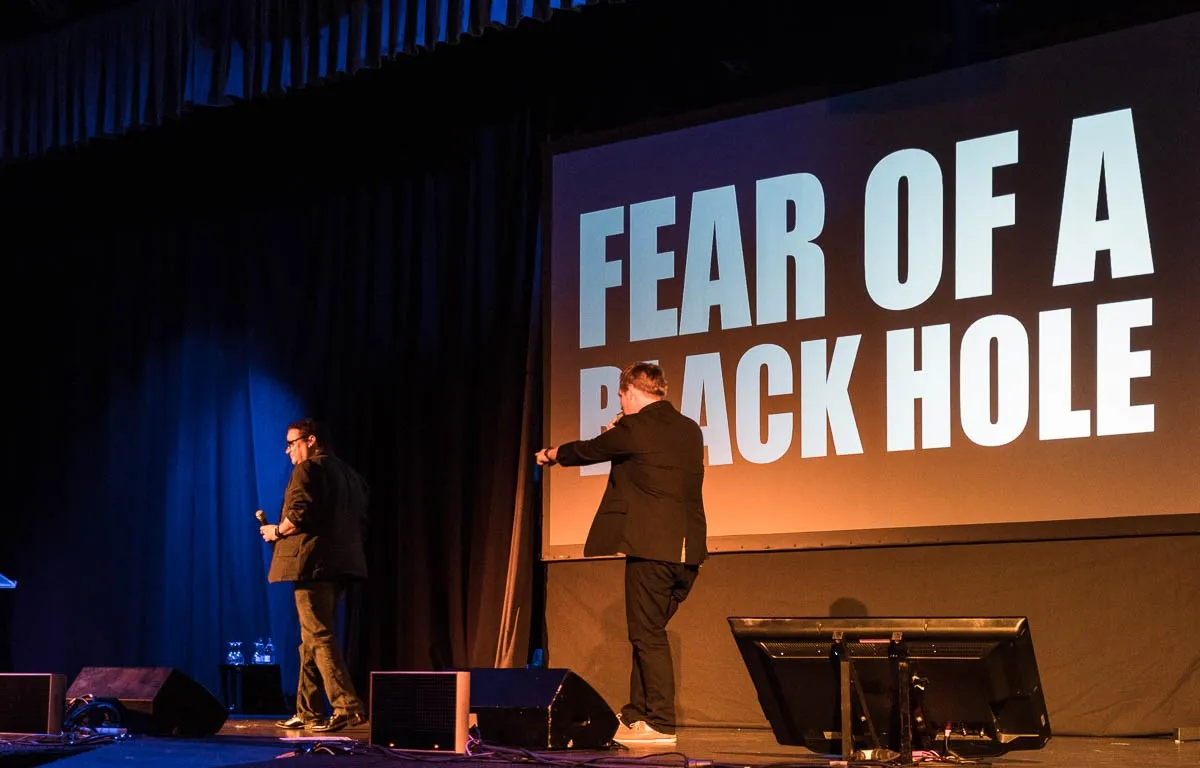
Caspian! His stories are really frightening. Not that the Russians (or indeed anyone in the world with a TV or Internet) need to be convinced that meteorites crashing on Earth are a reality:). However, his explanations were interesting: Apparently, astronomers only know about 70% of the objects over a kilometre in diameter that orbit around the Earth!
Okay, so what should we do to save ourselves from asteroid collisions?
Stop or change the orbit (it is possible if we get a good response to step 1);
Foresee them;
Understanding their orbit;
Evacuate the population of the "predicted target" (if the target is not "the whole world");
Attempt to blow up the outrageous asteroid (its shatters will always be preferable to its entirety).
In short, hearing about the future astronauts and physicists is depressing.
But when your mood has been lowered to the level of despair, obviously that only one thing to do: listen to rock' n' roll!
Brian May
Professor of British astrophysics. Apparently, he also played in a rock band?2 told us about a 3D project to observe the planets of our universe. And they have shown some images of the planets from different angles, so the Earthlings can see extraterrestrial illusions in 3D from their comfortable terrestrial homes. Very impressive.

Meanwhile, another star of the world of music, Brian Eno, during the dinner was not in good mood, but not for fear of the asteroid....
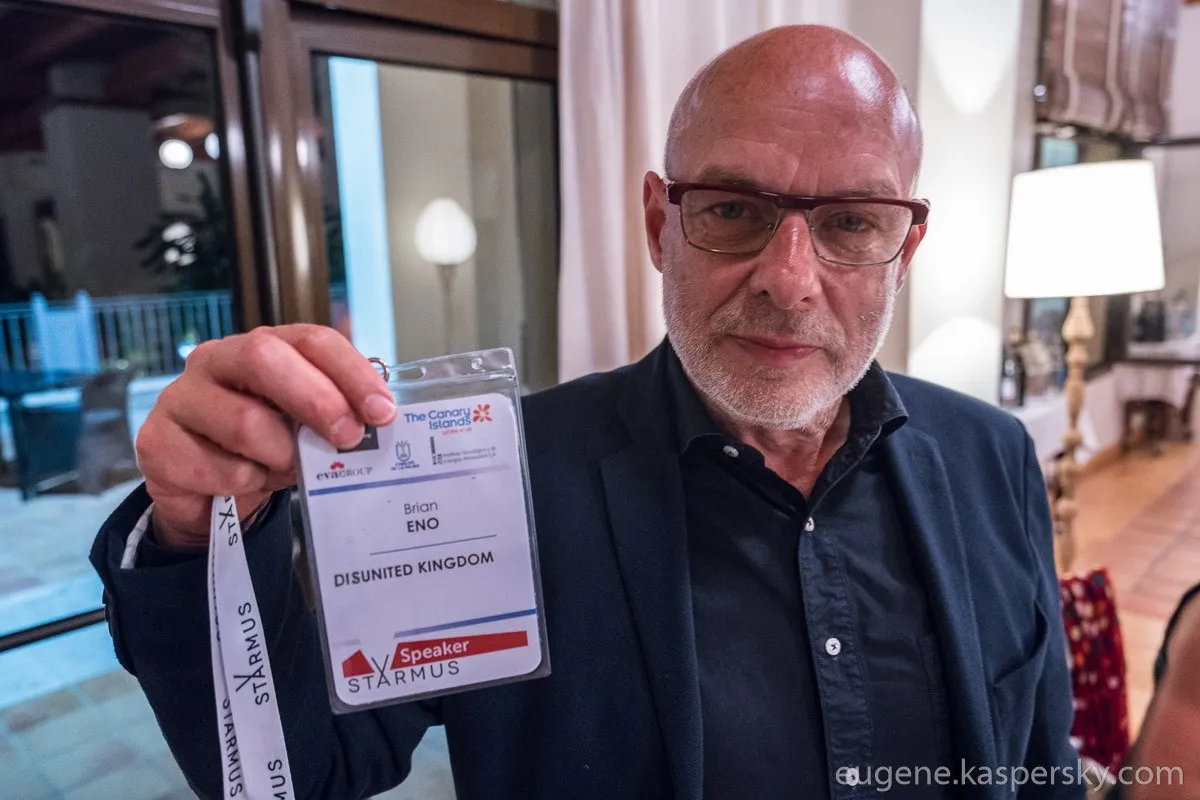
The next morning, we were all loaded on a plane and brought to the nearby island of La Palma. Wow. I had never flown with so many Nobel Prize winners and astronauts on the same plane.

Out from the window, the Teide. The dirty window and propeller between the feet is a shame.
I was here in La Palma a few months ago. Since then, the side of the volcano has been covered with yellow flowers. It looks much better!
All that yellow diffused an incredible aroma all around. But just smell the roses the flowers, it's time to work in the observatory.

It's time for a selfie, through the telescope lens, of course:

We were there to attend an oval round table. Once again, everything is rather humiliating: (astro-)physical, astronauts, and also Jo Stiglitz (among other Nobel Nobles). We have spoken, spoken and spoken. A very well thought-out and competent conversation that will change the world.
After the oval round table, it was time for a break on the mountainside, yeh! The only problem was that I was in the office. Error. We walked a lot and the sun was burning.
Look at what panorama!
Back at the hotel, I went out to photograph the sunset. Before I realized it, the whole group came in and joined me.
And after sunset, guess what comes? The night. On a very high volcano. The idea is to see: get closer to all this!:
Oh for the galaxy! Next time I have to take my tripod. But even without, look at what I managed to photograph!
The white blotch in the middle is not a stain on the lens: it is the Milky Way!
Hours later we were up again near the stars, but this time on a plane that left La Palma. Goodbye, I will come back!......
Alas, I had to be somewhere else, so it wasn't enough for me to miss the last two days of Starmus. However, my V. B. travel buddies. and I. S. and I. S. have remained, so I give him the floor for a summary:
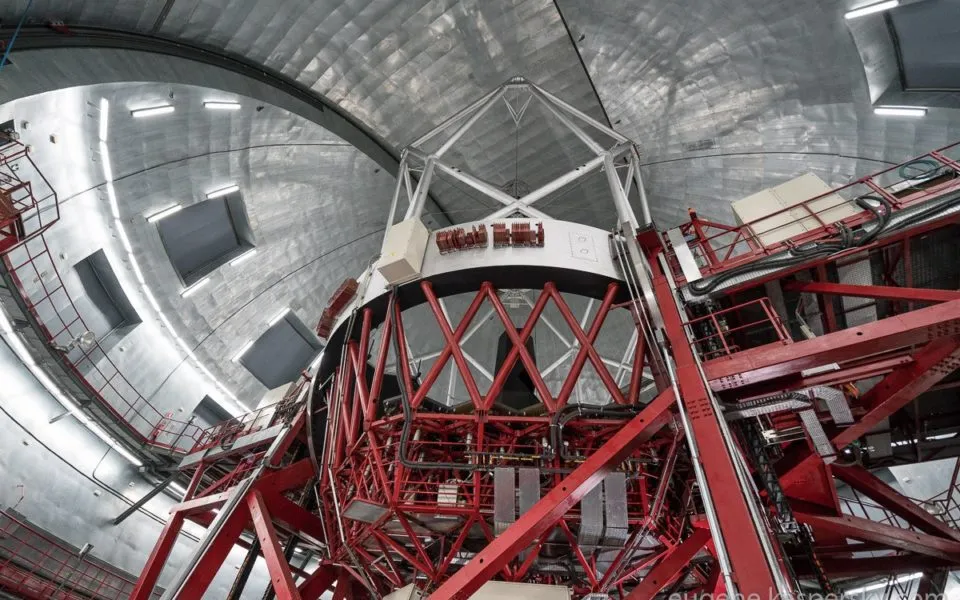
The musical installations of Starmus took place in a location perfectly suited to the purpose: a modern room with unusual architecture but fantastic acoustics.
Now, we're not new to first-class live concerts, and we're expecting this to be nothing. However, we were both pleasantly surprised: it was FANTASTICO!
The first to go on stage was Sarah Brightman with an entire symphony orchestra (of Tenerife). It still has that wonderful voice and an inimitable stage presence. In his repertoire, as it was inevitable, some songs from the Phantom of the Opera.
Next: Rick Wakeman. His performance included a song written specifically for Starmus. The astronaut Chris Hadfield has made a cover of an adequate cosmic piece, and has also told us about everyday life on the International Space Station. In the end, Hans Zimmer gave us an exceptional performance: a symphony orchestra, synthesizers and a video show from the other world. There were also video feeds of Sting and Bono. Unfortunately Brian May has only appeared on stage twice, and only once doing a guitar solo for which he is famous.
For the duration of the show, there were huge visual effects behind the musicians: a crazy psychedelic feast for the eyes. Together with music, everything was hypnotic, especially during Zimmer's conclusion. Really cosmic.

There was also a Skype call with Tim Peake, the British astronaut recently returned to Earth after a period of time on the ISS. He joined the rock band Anathema, and Stephen Hawking, for an unexpected lesson on gravitational waves and also the conferral of Stephen Hawking medal.
A curious detail: Stephen Hawking's portrait of the medal was designed by Alexey Leonov, the first man to walk in space. He also said that for next year's medal he would portray Garik Israelian, the creator of Starmus, who, by the way, received a standing ovation from all the audience.
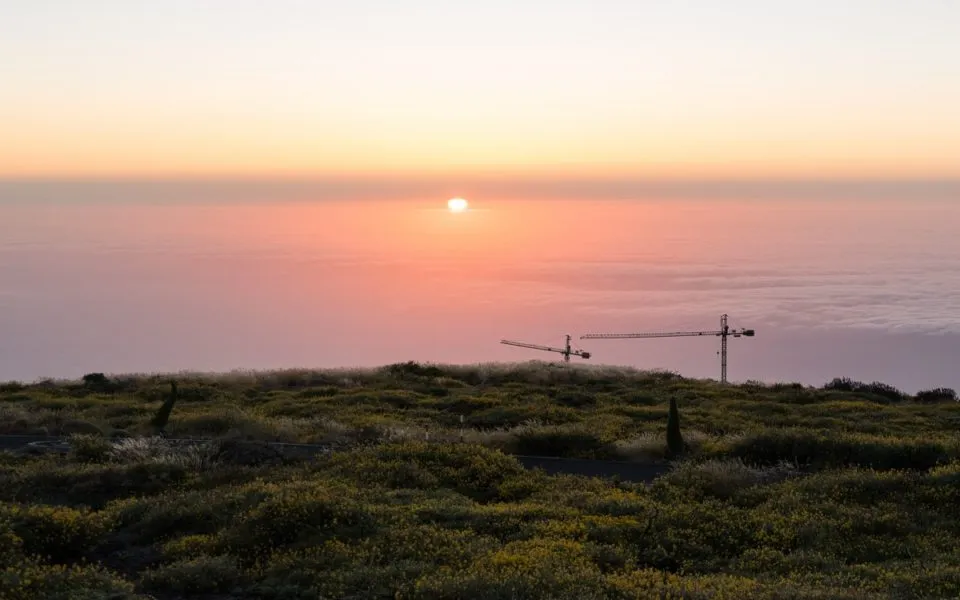
.... In the meantime, I am already very far away. In.....:

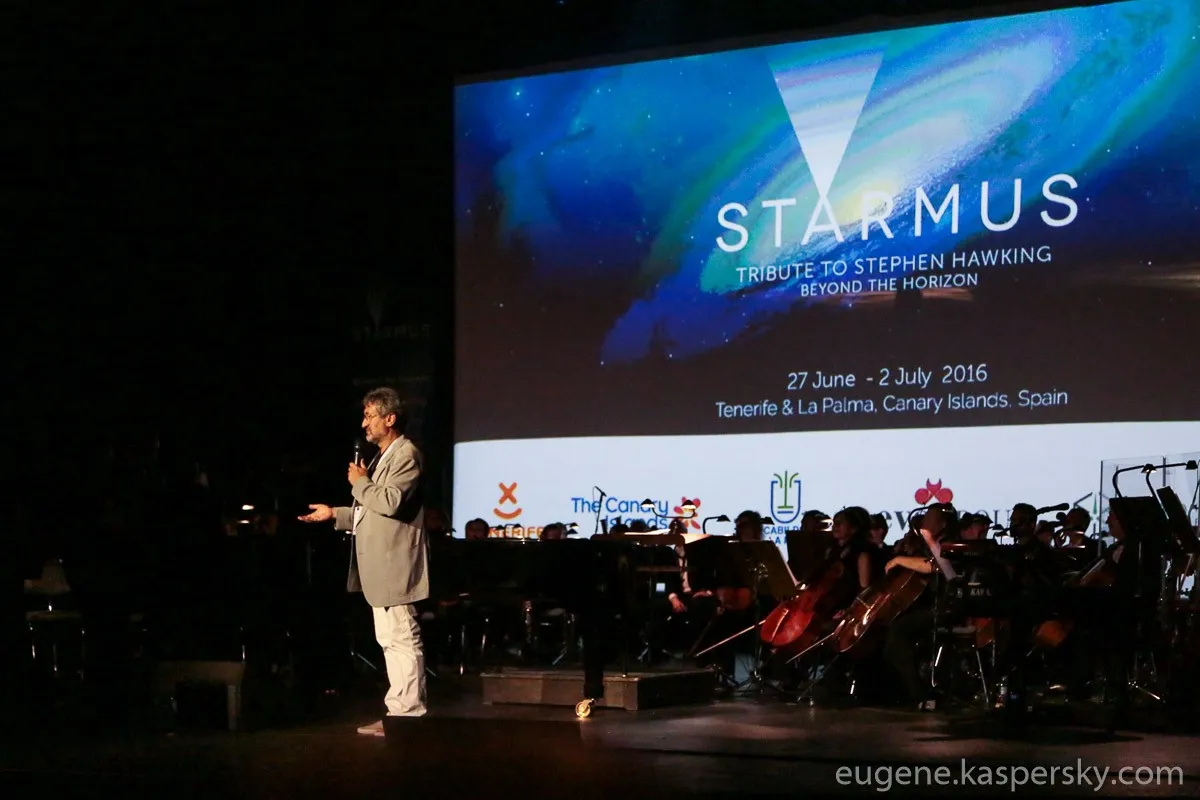
.... you'll never be wondered!
All Starmus photos can be found on my Flickr page.
For now, goodbye friends. See you soon.